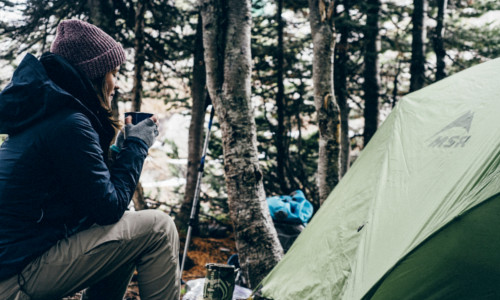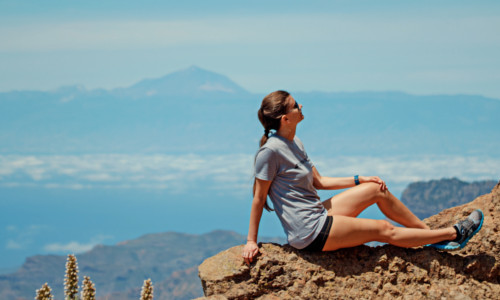Women-Specific Gear: Why and When?
 There have been a lot of changes during the past few decades in the outdoor accessory and gear industry. With an increasing number of female outdoor enthusiasts, the industry has changed gears to develop products keeping in mind their specific needs. Today, most of the stuff needed for outdoor activities and sports is readily available in women’s versions. But when do we really require women-specific gear for outdoor experience and when should we go for men’s accessories instead?
There have been a lot of changes during the past few decades in the outdoor accessory and gear industry. With an increasing number of female outdoor enthusiasts, the industry has changed gears to develop products keeping in mind their specific needs. Today, most of the stuff needed for outdoor activities and sports is readily available in women’s versions. But when do we really require women-specific gear for outdoor experience and when should we go for men’s accessories instead?
Here's what to look for when choosing your outdoor gear:
Clothing:
I find that women’s pants are too tight and are designed more for fashion than utility. Moreover, the lack of pockets is an absolute crime. I prefer women’s running shorts on the trail, but a friend has switched to men’s pants in search of comfort. Pick the clothing without cotton and make sure that the seams won’t cause chafing.
Bike:
Whether it is clothing or bikes, a perfect fit is all that really matters. There are bikes available that have a design and frame designed to fulfil our needs, with components that are equal in performance when compared to male bikes. But, it is possible that some women will find a men’s bike a better fit for them. The reason can be the purpose for which the bike is needed or just a need for a bike that feels sturdier.
Hiking Boots:
The choice of boots mainly depends on the foot size and the usage. Men’s boots have really thick angles and are very comfortable, while women’s shoes are designed to be narrower, especially in the heels. My choice is a men’s 10. What you should look for is a perfect fit and a tight cup around your heels.
Backpacking Packs:
Women-specific backpacking packs are easily available in the market. They are designed with a shorter torso, curved shoulder strap to fit around the breasts, extra padding and a smaller hip belt. Most rubbing and chafing occur on the side of the breasts and on hips that is easily tackled by the women’s pack.
Sleeping Bags:
Women’s sleeping bags are a little heavier and better insulated than the men’s sleeping bags, which is better, as our feet and hips get cold. However, the requirements may change according to the usage. Some may prefer men’s sleeping bags as they are lighter, easy to carry and a better fit for a taller frame.
 Sleeping Pads:
Sleeping Pads:
Women’s sleeping pads are designed with more insulation and cushioning under the feet and hips, which are spots in the female body that lose heat rapidly, but extra comfort is a decision differing from person to person. My backpacking priority is: weight, utility, and then comfort. It’s my thinking that extra weight tires you more than the comfort provided by extra cushioning.
Skis and Snowboards:
The flex of a women’s snowboard or ski is not as stiff as compared to a men’s version, giving you more control over them. I started with a men’s board, but after struggling a while I switched on to a board designed for women and it felt easier to control.
Climbing Harnesses:
Security and balance are the main requirements from a harness. Women’s harnesses are designed according to their body requirements and have larger thigh loops, smaller waists and higher rise for a perfect fit. The fit is critical as your safety depends on it. If you do not feel comfortable with a women’s harness, switch to a men’s one.
Take a pick that fits and suits you the best. Know your body, try some gear out and choose that which with you are most comfortable. If the gear is designed for women, it’s great, but if you feel comfortable with men’s gear then go for it instead.
Categories
- Sport (28)
- Product Reviews (3)
- Team Outdoor Look (7)
- Mike Wild (2)
- Mike Payton (2)
- Suse Hammond-Pears (3)
- Snowboarding (12)
- Latest Offers (105)
- Shop Talk (1)
- Competitions (7)
- Walking (413)
- Lifestyle Fashion (8)
- Travel (86)
- Kit Guides (176)
- Workwear Clothing (6)
- Safety Workwear (4)
- Health/Fitness (289)
- Skiing (91)
- Great Outdoors (1316)
- Cycling (92)
- January 2025
- December 2024
- November 2024
- October 2024
- September 2024
- August 2024
- July 2024
- June 2024
- May 2024
- April 2024
- March 2024
- February 2024
- January 2024
- December 2023
- November 2023
- October 2023
- September 2023
- August 2023
- July 2023
- June 2023
- May 2023
- April 2023
- March 2023
- February 2023
- January 2023
- December 2022
- November 2022
- October 2022
- September 2022
- August 2022
- July 2022
- June 2022
- May 2022
- April 2022
- March 2022
- February 2022
- January 2022
- December 2021
- November 2021
- October 2021
- September 2021
- August 2021
- July 2021
- June 2021
- May 2021
- April 2021
- March 2021
- February 2021
- January 2021
- December 2020
- November 2020
- October 2020
- September 2020
- August 2020
- July 2020
- June 2020
- May 2020
- April 2020
- March 2020
- February 2020
- January 2020
- December 2019
- November 2019
- October 2019
- September 2019
- August 2019
- July 2019
- June 2019
- May 2019
- April 2019
- March 2019
- February 2019
- January 2019
- December 2018
- November 2018
- October 2018
- September 2018
- August 2018
- July 2018
- June 2018
- May 2018
- April 2018
- March 2018
- February 2018
- January 2018
- December 2017
- November 2017
- October 2017
- September 2017
- August 2017
- July 2017
- June 2017
- May 2017
- April 2017
- March 2017
- February 2017
- January 2017
- December 2016
- November 2016
- October 2016
- September 2016
- August 2016
- July 2016
- June 2016
- May 2016
- April 2016
- March 2016
- February 2016
- January 2016
- December 2015
- November 2015
- October 2015
- September 2015
- August 2015
- July 2015
- June 2015
- May 2015
- April 2015
- March 2015
- February 2015
- January 2015
- December 2014
- November 2014
- October 2014
- September 2014
- August 2014
- July 2014
- June 2014
- May 2014
- April 2014
- March 2014
- February 2014
- January 2014
- December 2013
- November 2013
- October 2013
- September 2013
- August 2013
- July 2013
- June 2013
- May 2013
- April 2013
- March 2013
- February 2013
- January 2013
- December 2012
- November 2012
- October 2012
- September 2012
- August 2012
- July 2012
- June 2012
- May 2012
- April 2012
- March 2012
- February 2012
- January 2012
- December 2011
- November 2011
- October 2011
- September 2011
- August 2011
- May 2010
- April 2010
- March 2010
- February 2010
- January 2010
- November 2009
- October 2009
- September 2009
Submit a Comment